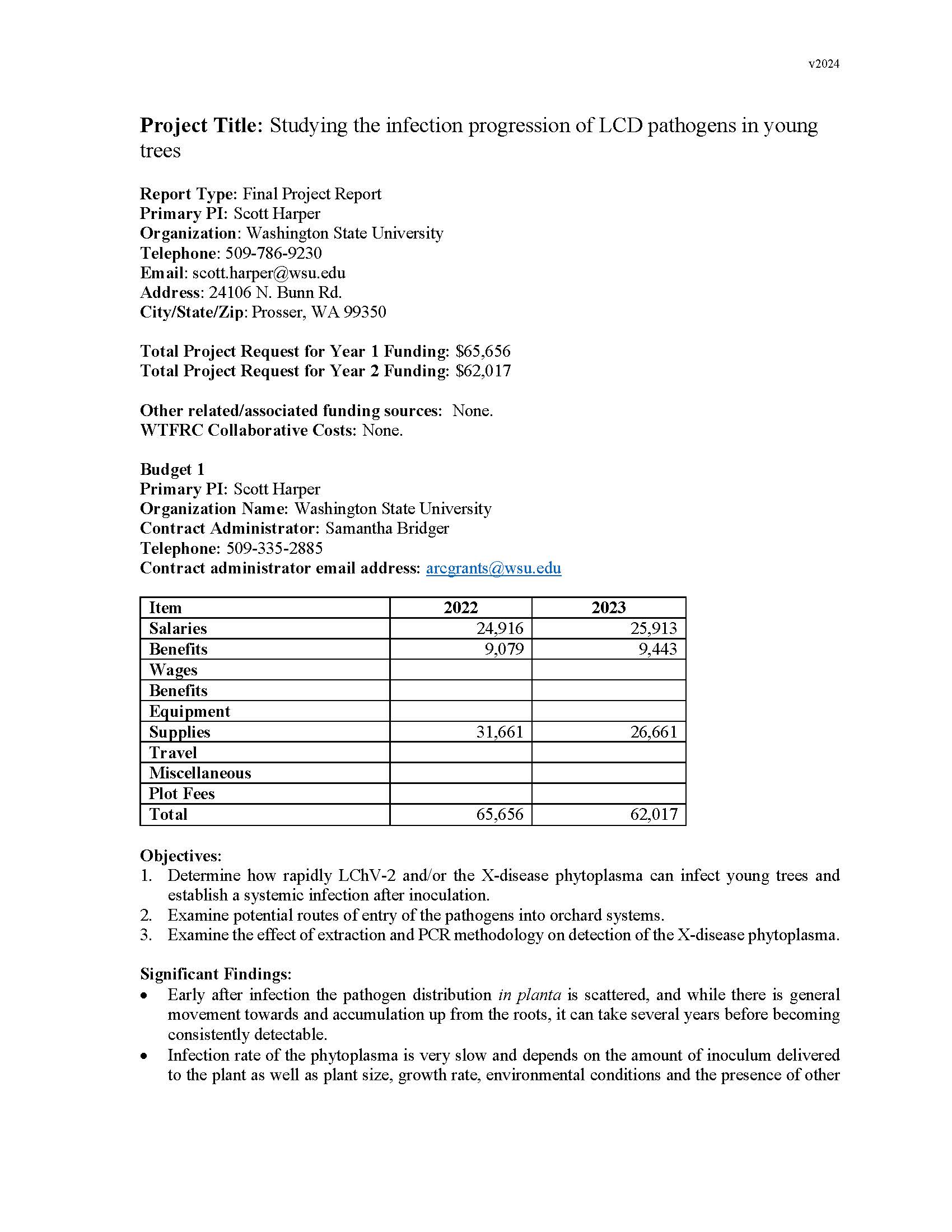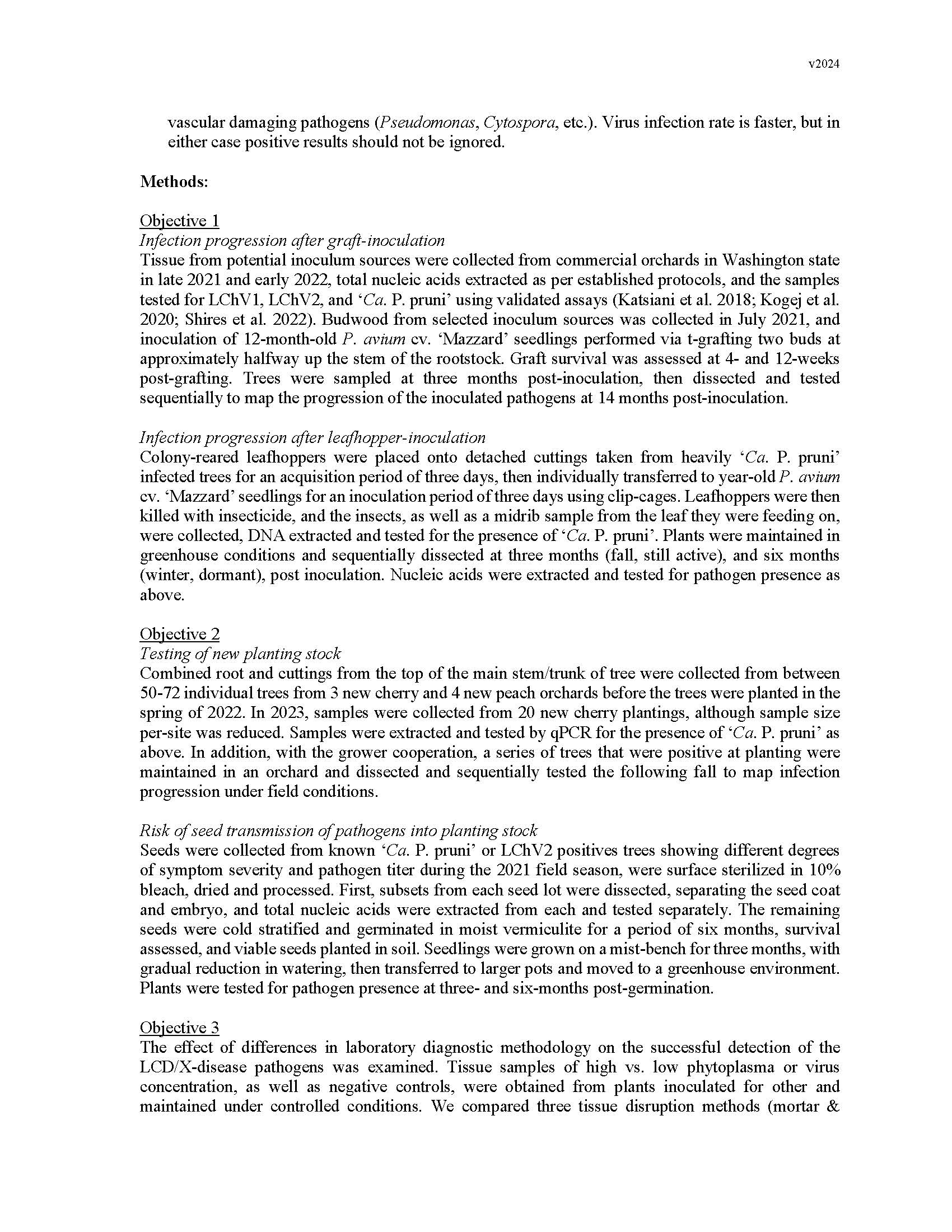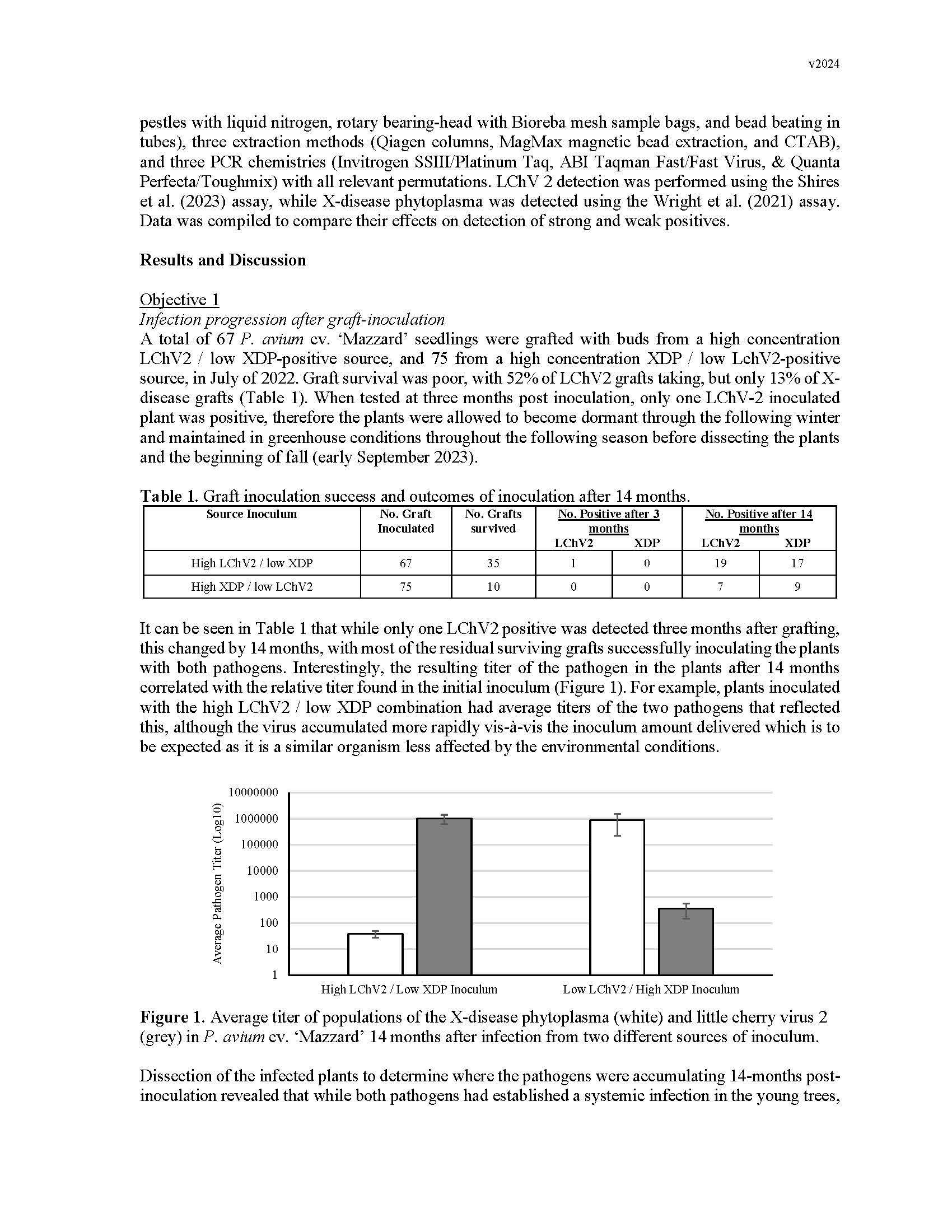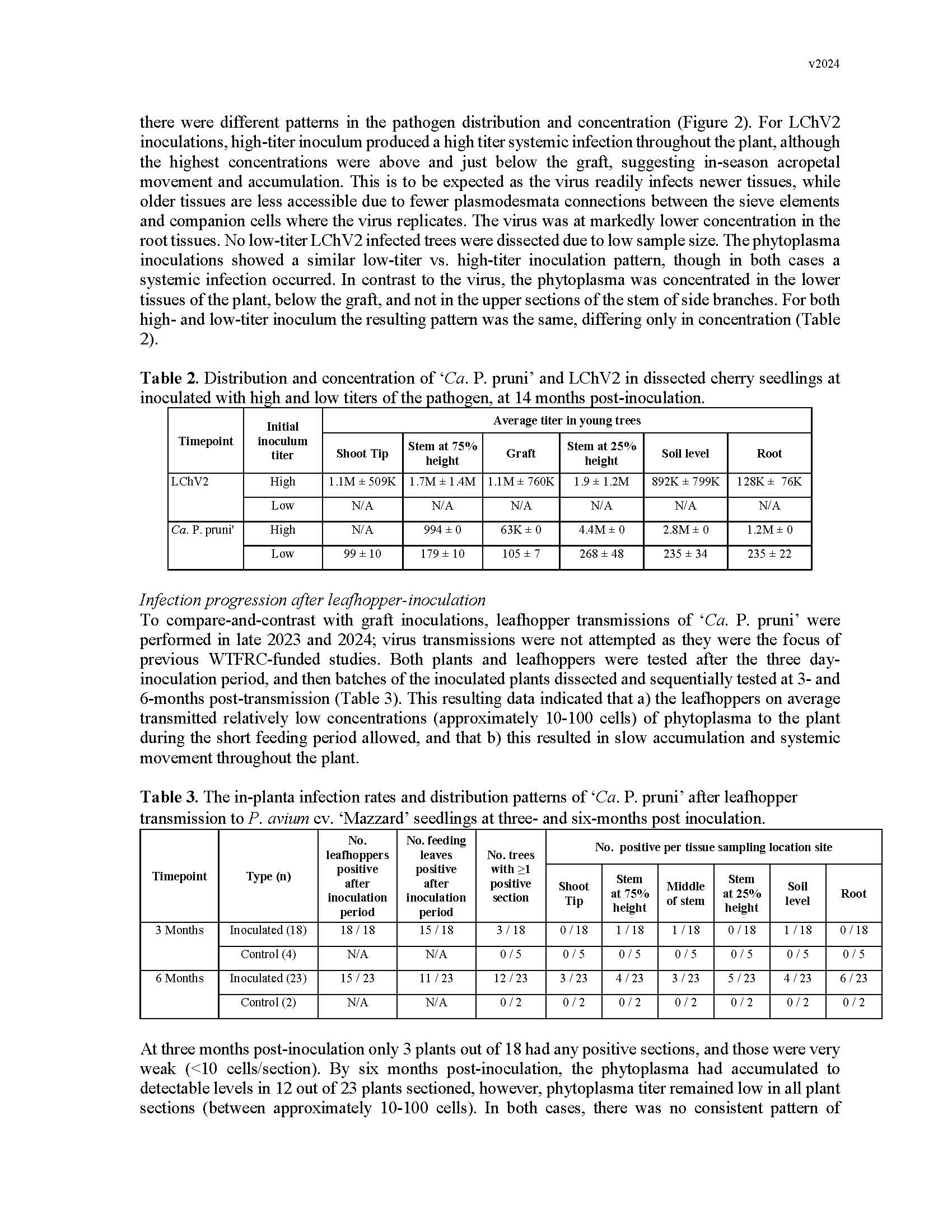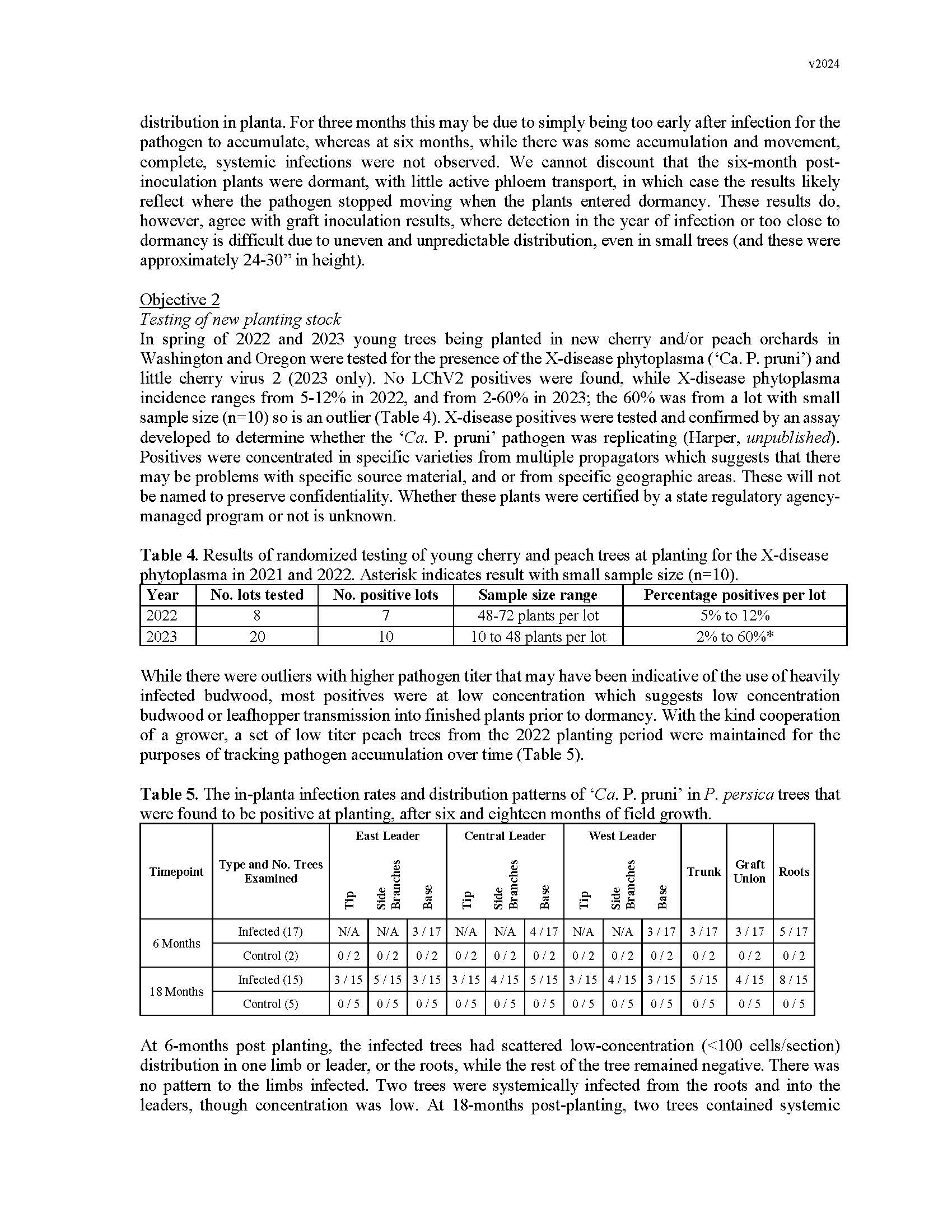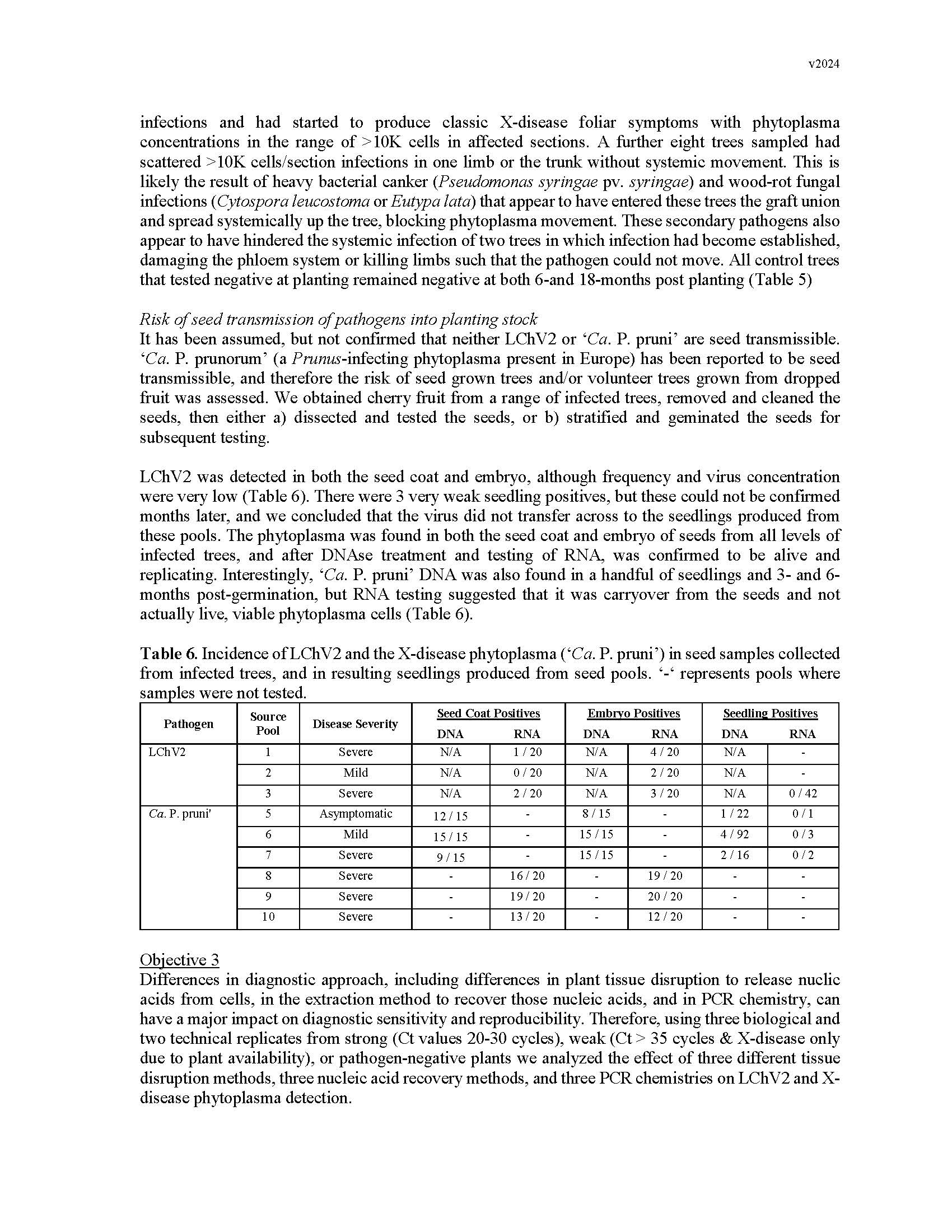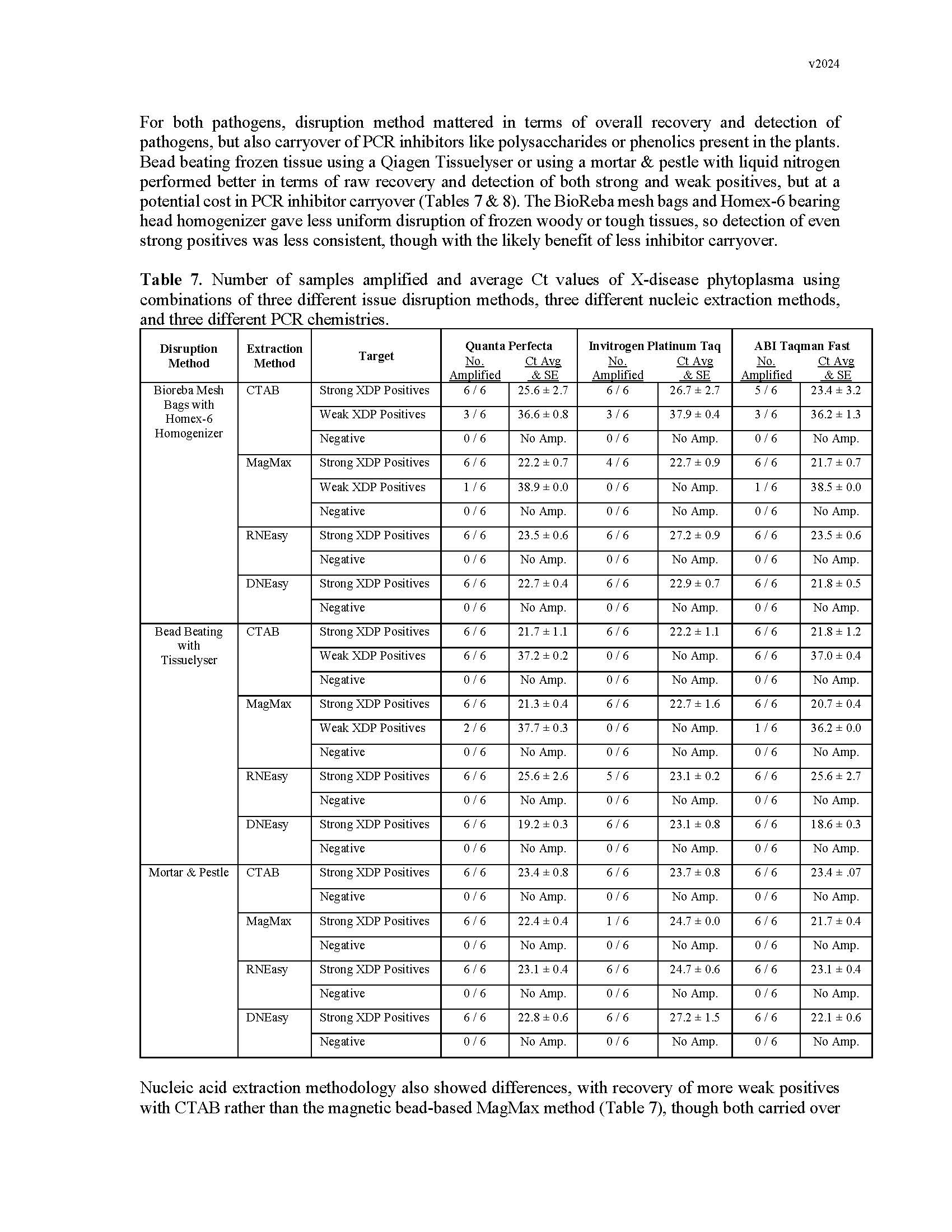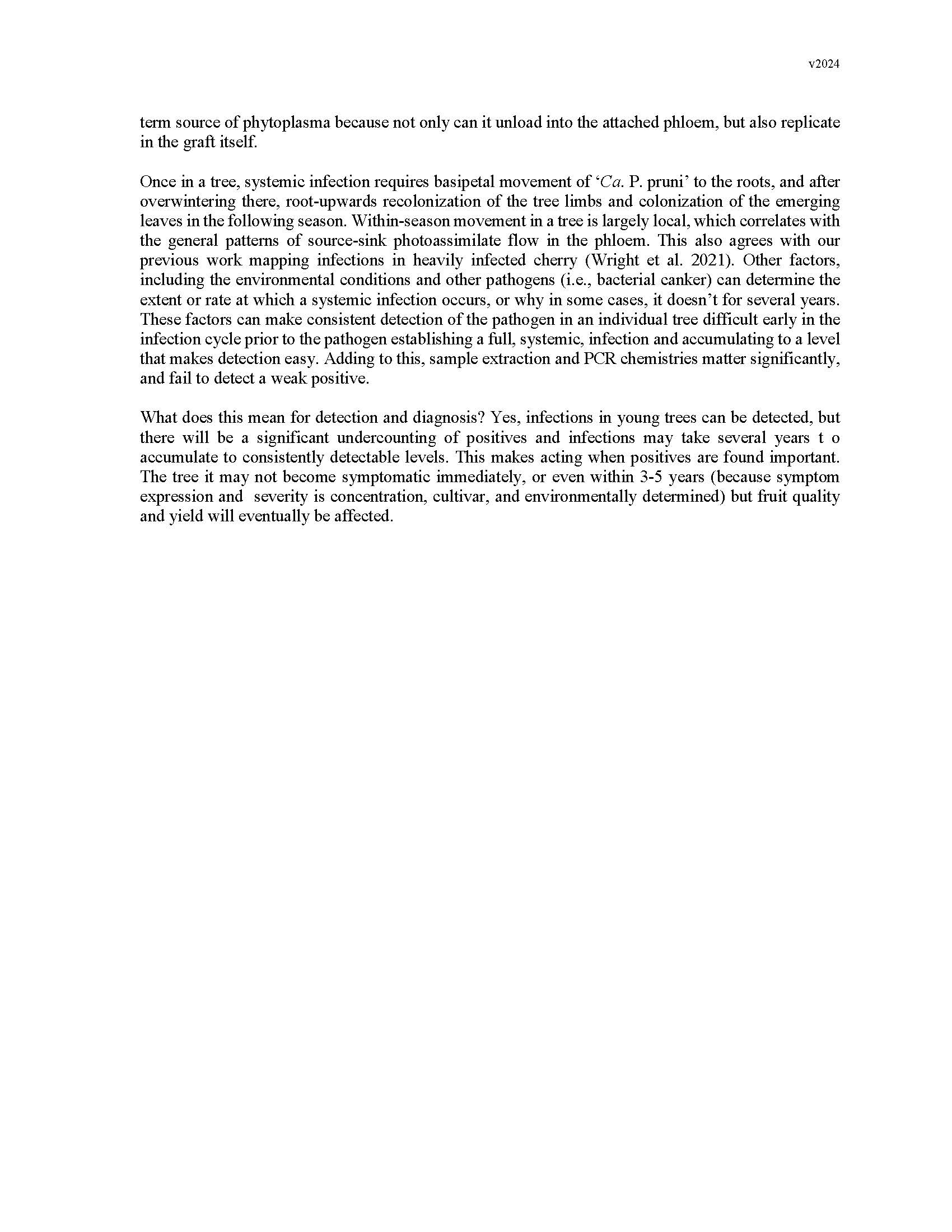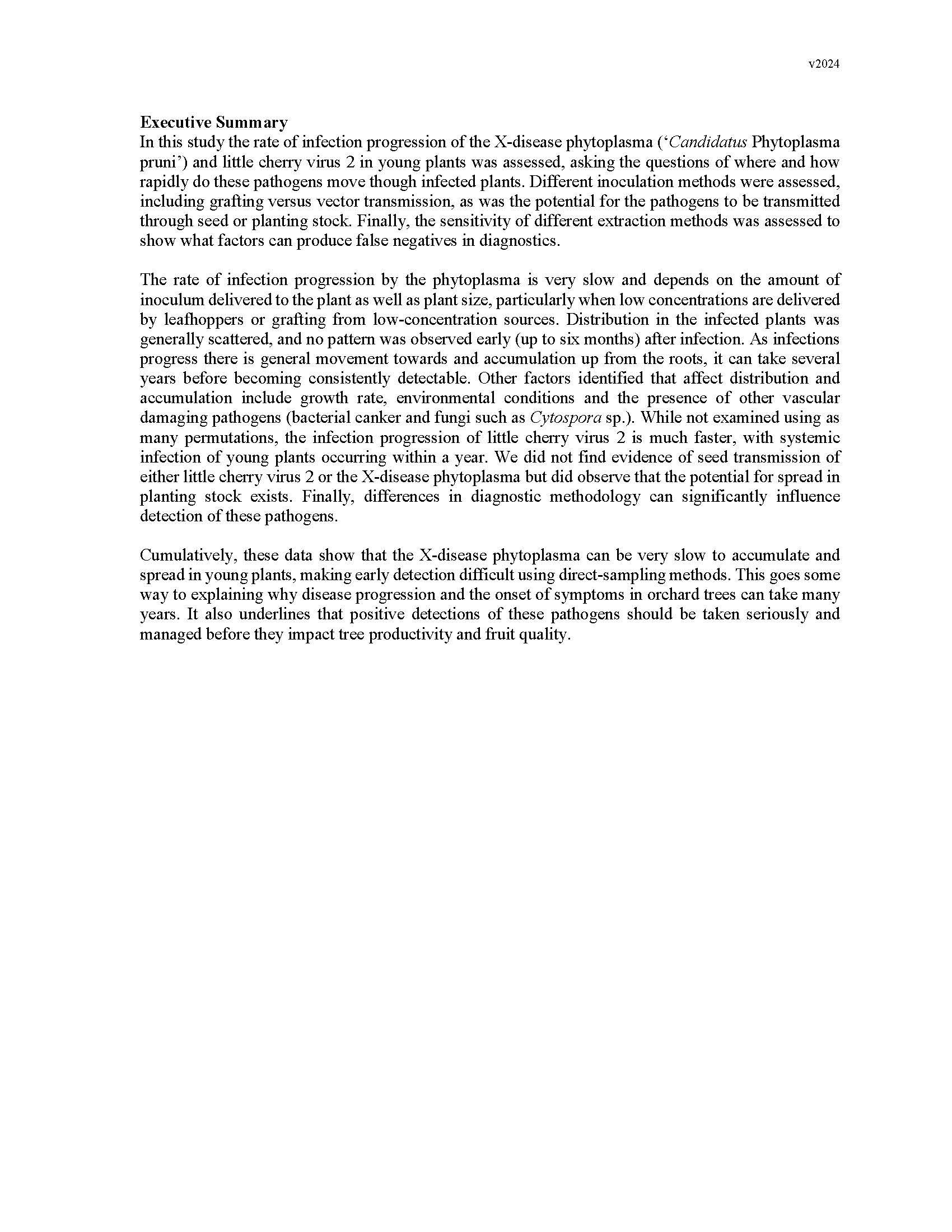Studying the infection progression of LCD pathogens in young trees
Author: Scott Harper
Published: 2025
Summary: In this study the rate of infection progression of the X-disease phytoplasma (‘Candidatus Phytoplasma pruni’) and little cherry virus 2 in young plants was assessed, asking the questions of where and how rapidly do these pathogens move though infected plants. Different inoculation methods were assessed, including grafting versus vector transmission, as was the potential for the pathogens to be transmitted through seed or planting stock. Finally, the sensitivity of different extraction methods was assessed to show what factors can produce false negatives in diagnostics. The rate of infection progression by the phytoplasma is very slow and depends on the amount of inoculum delivered to the plant as well as plant size, particularly when low concentrations are delivered by leafhoppers or grafting from low-concentration sources. Distribution in the infected plants was generally scattered, and no pattern was observed early (up to six months) after infection. As infections progress there is general movement towards and accumulation up from the roots, it can take several years before becoming consistently detectable. Other factors identified that affect distribution and accumulation include growth rate, environmental conditions and the presence of other vascular damaging pathogens (bacterial canker and fungi such as Cytospora sp.). While not examined using as many permutations, the infection progression of little cherry virus 2 is much faster, with systemic infection of young plants occurring within a year. We did not find evidence of seed transmission of either little cherry virus 2 or the X-disease phytoplasma but did observe that the potential for spread in planting stock exists. Finally, differences in diagnostic methodology can significantly influence detection of these pathogens. Cumulatively, these data show that the X-disease phytoplasma can be very slow to accumulate and spread in young plants, making early detection difficult using direct-sampling methods. This goes some way to explaining why disease progression and the onset of symptoms in orchard trees can take many years. It also underlines that positive detections of these pathogens should be taken seriously and managed before they impact tree productivity and fruit quality.
Keywords:

